9- Building Industry Connections and Gaining Experience
After figuring out your brand and learning the business side of fashion, the next step is all about making connections and gaining real-world experience. The fashion world moves fast, and building relationships can seriously help you get noticed, land opportunities, and grow your brand. From internships and events to collabs and magazine features, there are so many ways to put yourself out there. In this section, we’ll get into how to gain experience, meet the right people, and start building your name in the industry. Topics include internships, networking, fashion events, media features, and collaborating with other creatives.
Internships, Apprenticeships, and Work Experience
It is super helpful to get real-world experience while you’re still figuring out your path in fashion. Whether it’s an internship, apprenticeship, or part-time job, these opportunities help you learn the ropes and build industry connections. Each one offers something different, so it’s worth exploring what fits best with your goals.
Internships
Internships are one of the best ways to get real experience in the fashion industry. They give you a behind-the-scenes look at how fashion brands run on a daily basis, from design and production to marketing and events. You might start off doing tasks like organizing samples, helping with admin, updating social media, or assisting during photoshoots and fashion weeks. While the work can be fast-paced and sometimes repetitive, you’ll pick up a lot just by observing how professionals handle their roles and collaborate as a team.
The best part about internships is the people you meet along the way; designers, stylists, assistants, PR teams, and more. These connections can lead to freelance work, mentorship, or even full-time roles later on. Make sure to check brand websites and social platforms for internship openings, and don’t be afraid to send a short, polite message expressing your interest. Just showing up with a good attitude and willingness to learn can leave a lasting impression.
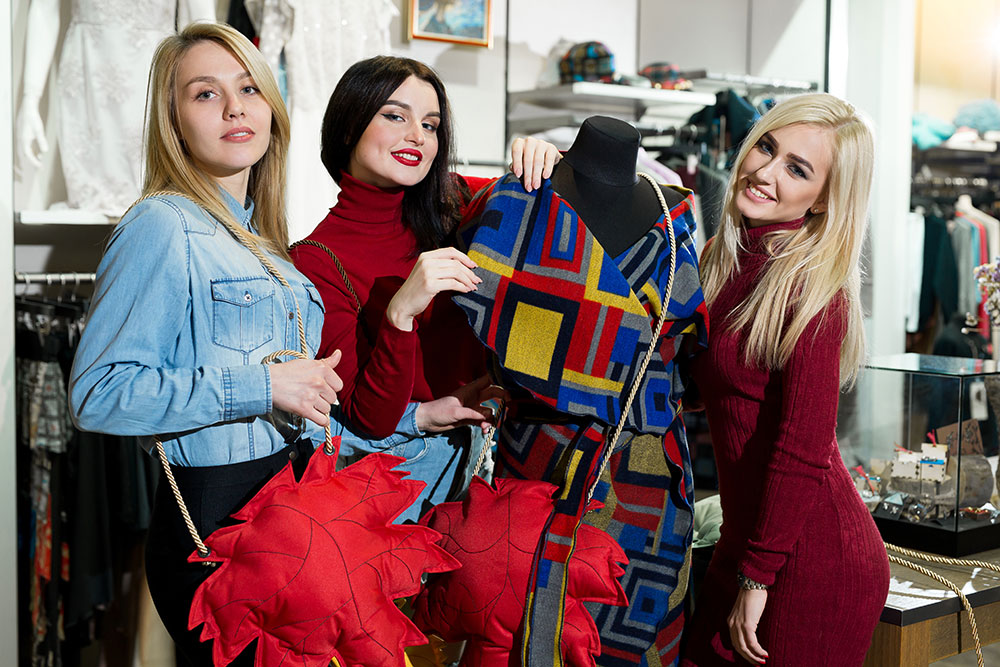
Apprenticeships
Apprenticeships are a solid option if you’re looking for a structured path into the fashion industry that still gives you hands-on experience. Unlike internships, which are often short-term, apprenticeships usually run for a year or more and include both on-the-job training and some classroom-style learning. You could be trained in areas like garment construction, production, merchandising, or design support; depending on the program and your interests. It’s a great way to build skills while also earning a bit of money, which can be super helpful when you’re just starting out.
They’re especially useful if you prefer a more practical route over a traditional academic one. Many apprenticeship programs are supported by fashion brands, retailers, or training providers, and they often come with a mentor who’ll guide you through the process. Even better, if you do well during your apprenticeship, there’s a real chance it could turn into a permanent role. It’s definitely worth researching opportunities that match your goals and style of working.
Work Experience
Work experience is a great way to dip your toes into the fashion industry without a long-term commitment. Whether it’s shadowing a stylist, helping out at a boutique, or assisting at a fashion event, even short placements can teach you a lot about how the industry runs behind the scenes. You get to explore different roles; like PR, merchandising, or retail and see which ones actually excite you. Plus, it’s a chance to meet people, ask questions, and get a feel for the pace and expectations of fashion work.
Don’t worry if the placement is only for a week or two; every experience counts. It shows initiative and builds your confidence while giving you material for your CV or portfolio. Reach out to local brands, studios, or small businesses and offer to help, especially during peak times like launches or events. These smaller gigs can often lead to bigger opportunities down the line, especially if you stay professional, enthusiastic, and open to learning.
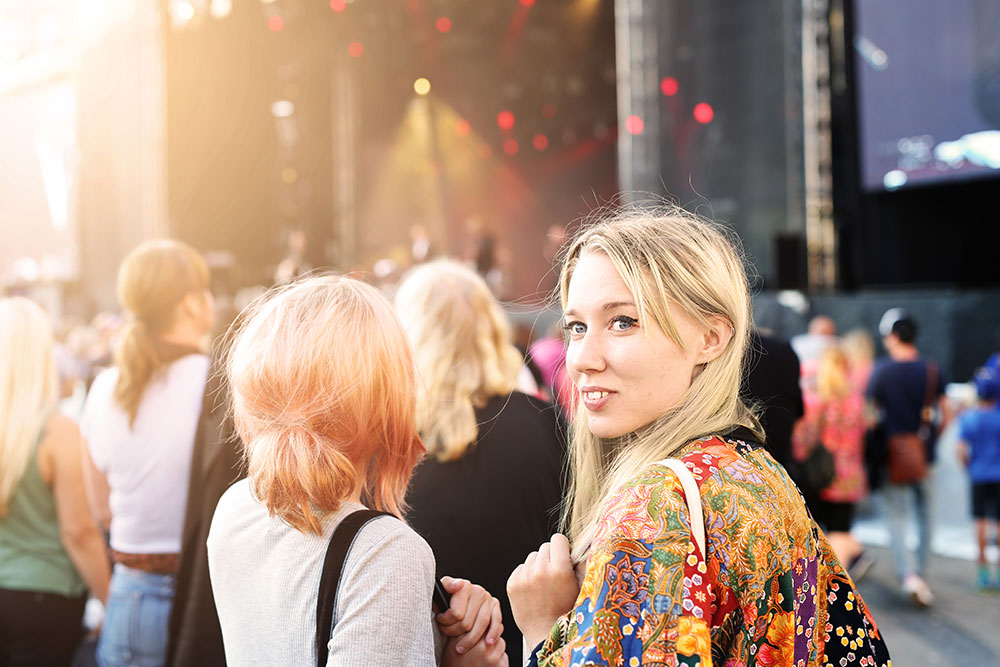
Attending Fashion Shows and Industry Events
It is super exciting and important to show up at fashion events if you’re trying to break into the industry. Whether it’s a big runway show or a small networking night, these events are where you meet people, get inspired, and start getting your name out there.
Fashion Shows
Fashion shows are where creativity, storytelling, and trendsetting come together. They’re not just about the clothes but they’re full experiences that show how designers bring their vision to life on the runway. Attending fashion shows gives you a behind-the-scenes look at how collections are styled, choreographed, and received by the industry. Whether you go as a guest, a student, or a volunteer, it’s an exciting way to understand the pace and pressure of fashion presentations. You’ll also get to see how different designers express their unique voice and brand through casting, music, lighting, and set design.
Getting involved doesn’t always mean landing a front-row seat. Many shows have opportunities for volunteers to help with setup, guest check-ins, or backstage support and that can be just as valuable. There are also off-schedule shows and independent showcases that highlight emerging designers, often in smaller venues with a more intimate vibe. These can be even more inspiring and accessible when you’re starting out. Showing up to these events, paying attention, and connecting with the people around you can spark ideas, grow your network, and keep your passion for fashion alive.
Industry Events
Industry events are one of the best ways to plug into the fashion scene and build real-world connections. From workshops and networking nights to fashion panels, pop-ups, and showroom launches, these events bring together people from every corner of the industry; designers, stylists, PR reps, editors, and more. They’re not just about showing face either. These events give you insight into what’s trending, what brands are looking for, and what conversations are shaping the future of fashion. It’s a chance to ask questions, swap ideas, and meet people who could end up being collaborators, mentors, or even future employers.
Whether you’re just starting out or already building your brand, showing up to industry events can really boost your confidence and visibility. The key is to be prepared and bring a few business cards, have your online portfolio or socials ready to share, and don’t be shy about introducing yourself. These gatherings are full of people who are just as passionate about fashion as you are, so be open, genuine, and curious. You never know where one good conversation might lead, whether it’s a creative collaboration, a freelance gig, or even a long-term professional.
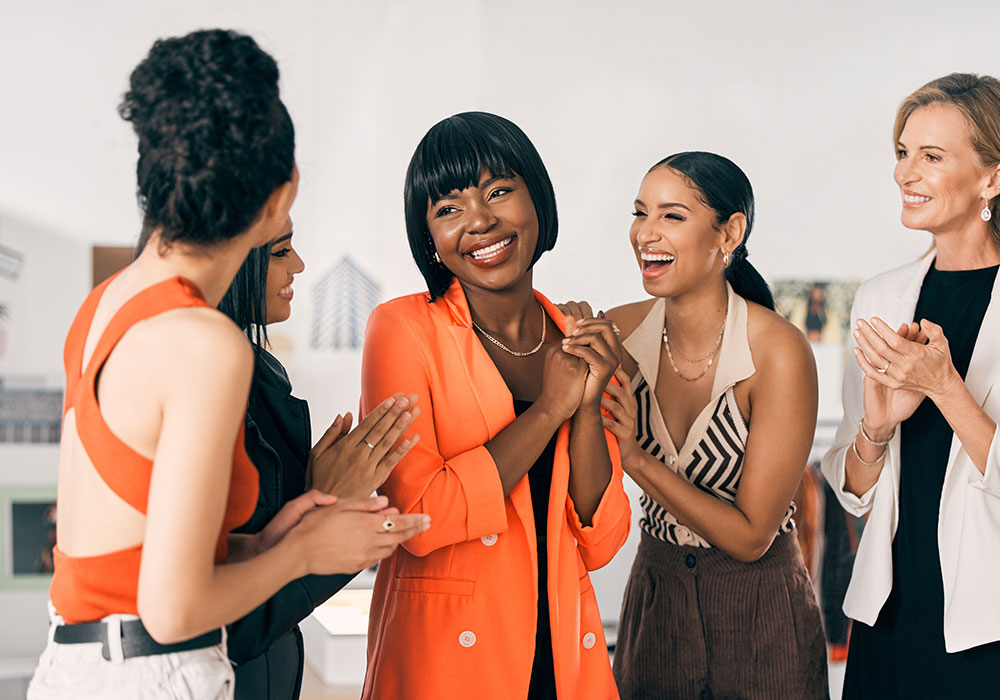
Networking with Other Designers and Fashion Professionals
Networking with other designers and fashion professionals is essential for building a long-lasting career in the industry. Fashion is not just about talent but it’s also about who you know and how you connect. Having a strong network can help you discover new job opportunities, get advice, and even collaborate on creative projects. And the best part? It doesn’t always have to happen in super formal settings. A simple comment on Instagram, a DM to compliment someone’s work, or chatting at a local fashion pop-up can be all it takes to get the ball rolling. When you approach networking with genuine curiosity and kindness, people are way more likely to remember you.
In a city like London, there are so many places to meet other creatives and professionals. Co-working hubs like The Trampery are great for casually connecting with people in the industry, whether you’re working there or attending one of their community events. You also have networking events hosted by Fashion District, which bring together emerging talent, industry experts, and people genuinely excited about the future of fashion. Showing up to these kinds of events; even if you’re a little nervous, can make a huge difference. It’s about building relationships over time, not collecting business cards. Be open to conversation, share your story, and ask questions. Most people are happy to share their experiences if you approach them with respect and real interest.
Online platforms are also a major part of modern networking. Instagram, TikTok, LinkedIn, and even Discord fashion communities allow you to connect with people across the world. You can follow designers you admire, join group chats or forums, and even pitch collaborations through DMs. If you’re just starting out, these digital spaces can feel less intimidating than in-person events. Just remember that consistency is key. Keep showing up, share your work, support others, and engage in conversations. Over time, these small interactions build trust and familiarity, which can grow into creative partnerships or job leads. Whether it’s a fellow designer, stylist, photographer, or mentor, building your network authentically will always pay off.
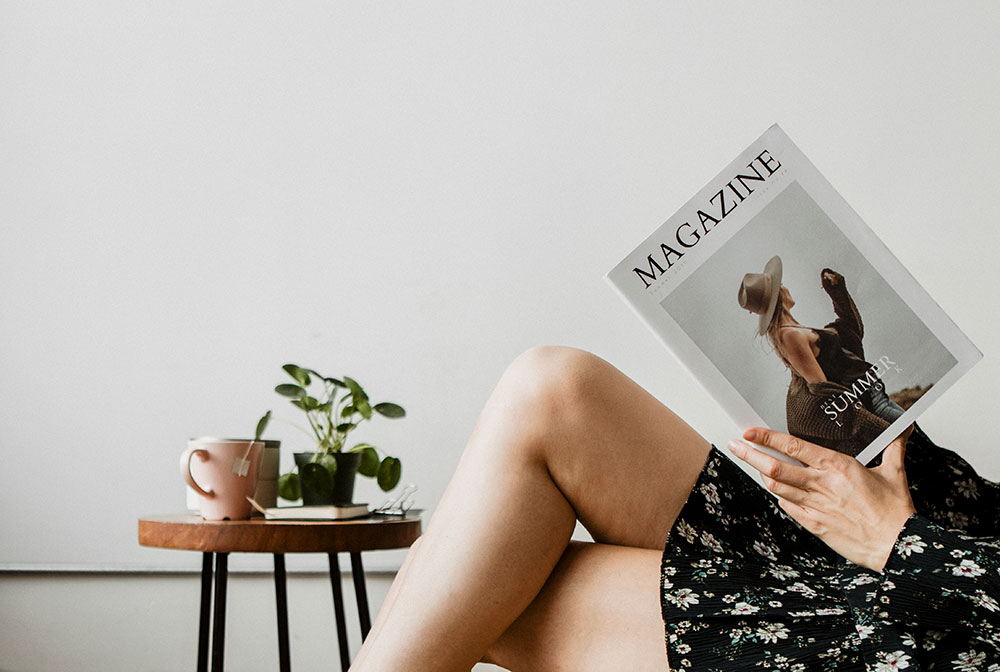
How to Get Featured in Fashion Magazines and Blogs
It is super exciting and validating to see your work featured in a magazine or blog. Getting that kind of exposure can seriously boost your credibility and help you reach new audiences. It all starts with creating work that feels fresh, thoughtful, and aligned with your personal style.
Fashion Magazines
Getting featured in fashion magazines is an exciting way to gain visibility and credibility for your brand. The key is to have a unique angle and strong storytelling that aligns with current trends or cultural conversations. Major publications like Dazed, i-D, and British Vogue are always on the lookout for fresh talent, especially designers who bring something new and innovative to the table. When pitching, make sure to present your collection with high-quality visuals that capture its essence, and include a concise, personal bio that tells your story and highlights your vision.
In today’s digital world, it’s common to connect directly with editors, either through emails or even social media DMs, but it’s important to approach them professionally and respectfully. Tailor your pitch to each publication, showing that you understand their aesthetic and audience. Being persistent without being pushy, and following up in a timely manner, can help you get noticed. While it might take time, getting featured in a respected magazine can open doors to new opportunities and solidify your reputation in the fashion industry.
Blogs
Fashion blogs and independent media platforms are amazing places to get your work seen, especially when you’re just starting out. Sites like Not Just A Label, Fashion Scout, and The Glass Magazine are known for supporting fresh voices in fashion. Unlike big-name magazines, they’re often more open to emerging designers with bold ideas and authentic stories. When reaching out, make sure your portfolio is polished, your social media is active, and your pitch clearly explains who you are and what makes your work special. These platforms want to hear your creative voice; so don’t be afraid to let it shine.
Beyond cold-pitching, building relationships with bloggers, stylists, and content creators can lead to features more organically. Attend fashion events, pop-ups, and creative meetups where you can meet people face-to-face; it makes a difference. Even just engaging thoughtfully with their content online can start conversations. The more visible and consistent you are, both digitally and in person, the more likely people are to take notice and share your work. It’s really about being part of the community, not just promoting yourself.
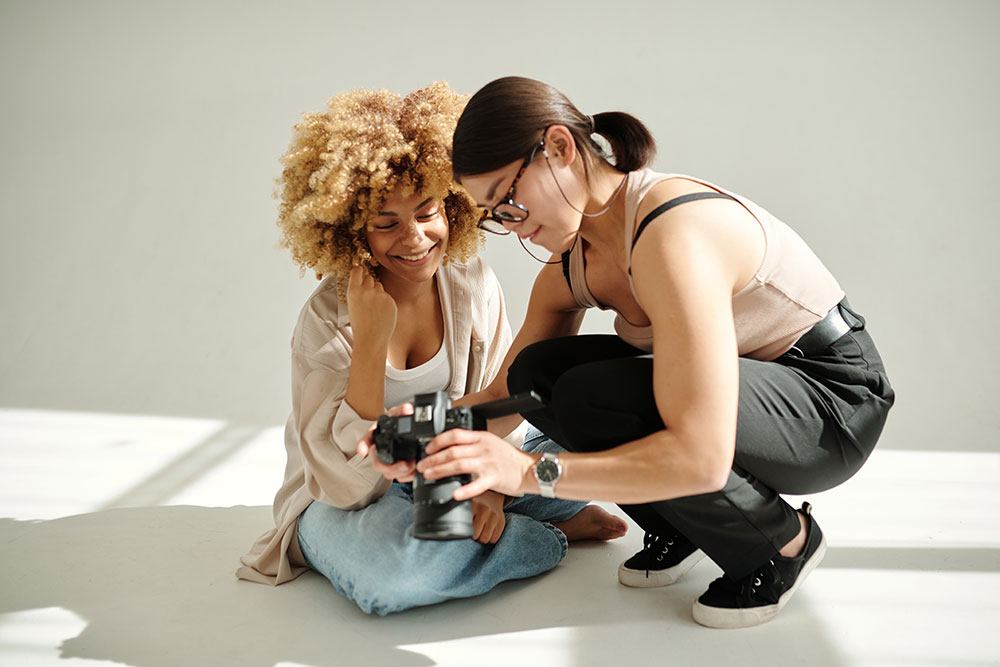
Collaborating with Photographers, Models, and Stylists
Collaborating with photographers, models, and stylists is crucial for bringing your designs to life in the most compelling way. A photoshoot is an opportunity to showcase not just your garments but the overall vibe of your collection. The lighting, the mood, the poses, and the styling all come together to tell a more powerful story about your brand. By teaming up with talented photographers, models who embody your brand’s energy, and stylists who know how to enhance your pieces, you create visuals that resonate with your audience. This collaborative effort can elevate your designs from simple garments to captivating, high-fashion imagery.
These partnerships can also open doors to wider recognition. When the right creative team gets involved, your photoshoots could attract the attention of magazines, blogs, and even potential clients who are drawn to the story your images tell. A solid team can help you stand out in a competitive market and ensure that your designs are presented in the best possible light, both online and in the fashion industry. It’s all about creating a cohesive, eye-catching narrative that helps your brand make an impact.
Photographers
Collaborating with a talented photographer can make all the difference in showcasing your designs in the most flattering way. Photographers have the expertise to capture not only the intricate details of your designs but also the movement, texture, and overall vibe you want to convey. It’s essential to seek out photographers whose style aligns with your aesthetic, as this will help ensure the final images reflect the vision you have for your brand.
When reaching out, it’s helpful to have a clear concept in mind, whether it’s for a lookbook, promotional photoshoot, or even behind-the-scenes content. In London, emerging photographers can be found on platforms like The Dots, where you can find portfolios that align with your creative direction. Remember, always give credit to each other’s work when sharing photos, as it not only builds mutual respect but also creates future opportunities for collaboration. Building strong relationships with photographers can elevate the quality of your content and make your brand look more professional.
Models
The right model can bring your designs to life in ways that go beyond just showcasing the clothes. It’s about how they express your vision, their energy, and the way they move and interact with the camera. A good model can elevate the mood of a photoshoot and make your designs feel dynamic and relatable. When casting, it’s important to consider more than just looks; the model’s ability to embody the style and personality of your brand is key to achieving the right vibe.
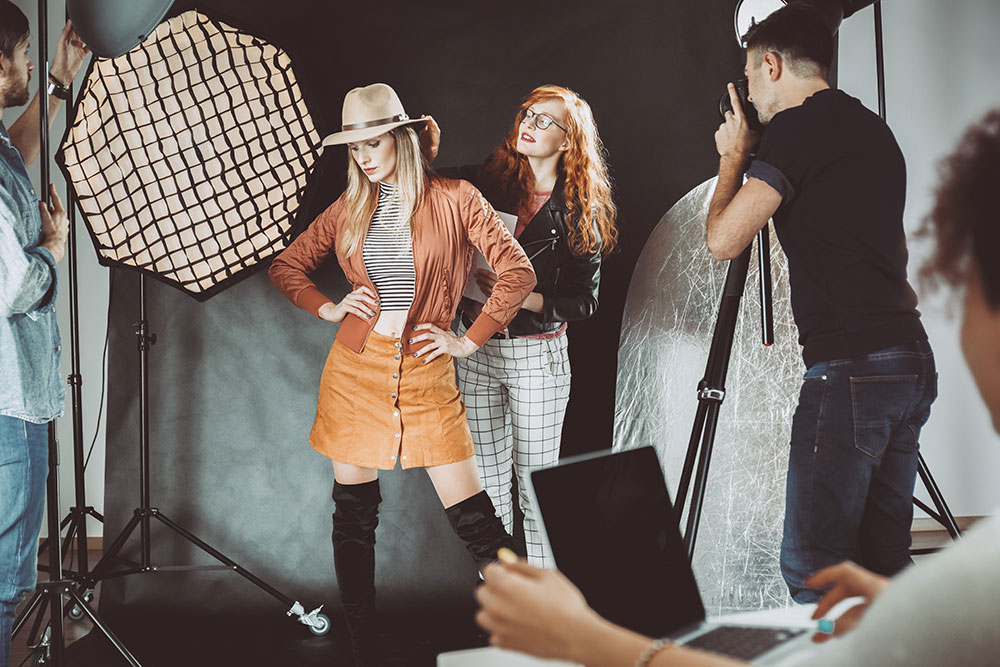
If you’re working with a limited budget, Instagram and TFP (trade for print) calls are great options to find models who are open to collaborating for portfolio-building opportunities. Many student models or emerging creatives are eager to gain experience and can be a perfect fit for your shoots. Clear communication is crucial, so make sure to discuss everything from the shoot concept to the desired mood and any logistical details. By establishing a solid rapport, you’ll ensure the collaboration is smooth and productive, resulting in powerful, authentic images that showcase your designs beautifully.
Stylists
Stylists are an essential part of the fashion process because they help bring your designs to life with accessories, layering, and expert styling. They can turn simple pieces into show-stopping outfits by adding their own creative touch, helping to enhance your vision while keeping your brand’s identity intact. A skilled stylist understands how to work with your designs to create looks that capture the essence of your collection, all while elevating the overall aesthetic. They help ensure that the right accessories and combinations are used, making your garments shine in ways you may not have imagined.
When collaborating with a stylist, it’s important to work with someone who resonates with your brand’s vibe and knows how to bring out the best in your pieces. In cities like London, many stylists post open calls for collaborations on platforms like Instagram or Fashion Workie, making it easier to find the right fit. By building a relationship with a stylist who understands your style and vision, you’ll be able to create shoots that capture the true spirit of your brand and present your collections in the best possible light.

10- Marketing and Promoting Your Work
In this section, you’ll learn how to effectively market and promote your fashion designs to gain visibility and attract clients or customers. We’ll begin by discussing how to use social media for fashion branding, helping you build an engaging and authentic presence on platforms like Instagram, TikTok, and Pinterest. Creating a website or online portfolio is essential for showcasing your work professionally, and we’ll guide you on how to do this to highlight your designs and creative process.
Building an audience and engaging with fashion communities is key to growing your network and getting your work noticed. We’ll explore strategies for connecting with people who resonate with your style and values. Next, we’ll cover how to pitch your work to fashion brands and retailers, giving you the tools to present your designs in a way that captures their attention. Finally, we’ll dive into the role of public relations in fashion, showing you how PR can help you get your designs featured in the media, increase brand awareness, and create valuable connections within the fashion industry. This section will arm you with the marketing know-how to take your fashion career to the next level.
How to Use Social Media for Fashion Branding
It is so important to build an online presence where people can see, love, and remember your work. Social media isn’t just about posting pretty pics but it’s also about showing your brand’s vibe, story, and growth. The best platforms let you connect with your audience, show behind-the-scenes moments, and even sell directly. A strong digital presence can literally open doors to collaborations, press features, and sales. Below are three platforms you should totally be using
Instagram is your chance to showcase your fashion designs in a dynamic way, acting as a visual portfolio that’s constantly evolving. You can share everything from your finished designs to the creative process behind them, behind-the-scenes shots, and even mood boards or design inspiration. To create a cohesive brand presence, it’s important to keep your feed clean and consistent with your colors, fonts, and tone. This helps build a recognizable aesthetic that resonates with your audience.
In addition to your main feed, Instagram Stories and Highlights are perfect for sharing updates, events, or collaborations with a more personal touch. Many designers, like @sineadgorey and @karolinevitto, use Instagram to not only display their collections but also to create a strong visual identity and connect with their audience. By utilizing features like Stories to share sneak peeks or promotions, you can engage followers and keep them invested in your brand’s journey.
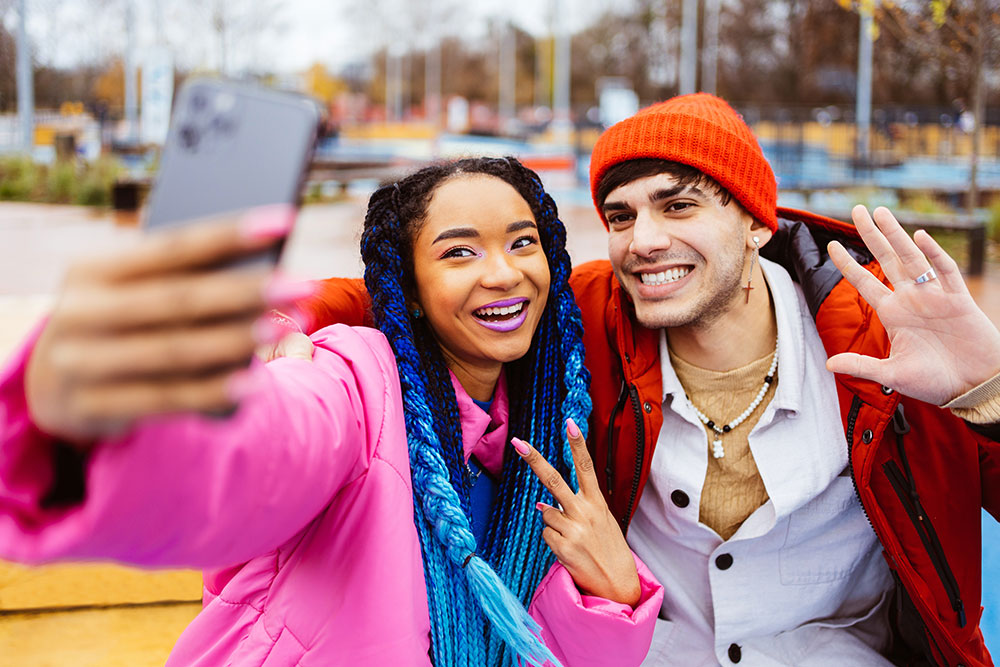
Tiktok
TikTok is the perfect platform to let your creativity shine and connect with your audience on a more personal level. You can share your design process, packaging orders, or even fashion hacks that give people a behind-the-scenes look at your work. It’s all about making your followers feel like they’re part of your journey. The best part is, TikTok thrives on authenticity, so just be yourself and share your real moments, no need for fancy equipment; good lighting and a genuine vibe go a long way.
Jumping on viral trends, popular sounds, and challenges is also a great way to increase your visibility and attract new followers. Fashion influencers like @wisdm and @youngemmna have mastered TikTok, turning their accounts into platforms for exposure and even brand partnerships. By embracing TikTok’s casual and creative nature, you can showcase your designs in a fun, engaging way that speaks directly to your audience and helps you build a strong, relatable presence.
Pinterest is an ideal platform for curating mood boards, showcasing your design aesthetic, and driving traffic to your website. It acts as a visual search engine where people are constantly seeking style inspiration, making it a powerful tool for getting your work discovered. You can pin your collections, sketches, lookbooks, and design concepts, while using keyword-rich captions to make sure your posts are easily found by users interested in similar styles.
Since Pinterest users are actively searching for inspiration, your designs can get saved, shared, and spread across the platform, increasing visibility. It’s also a great way to establish your brand’s aesthetic, as you can visually represent your concepts and style. Over time, Pinterest can become a valuable resource for building your brand’s presence, directing traffic to your website, and even converting followers into customers.
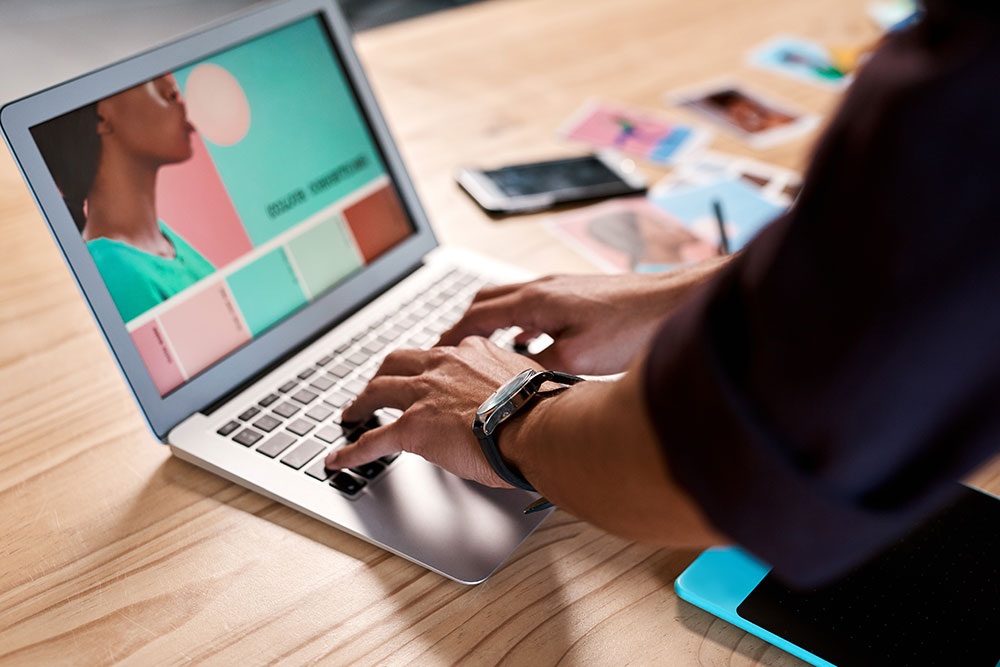
Creating a Website or Online Portfolio
It is important to have a space that’s 100% yours, where you can fully control how your work is presented. A personal website or online portfolio shows that you’re serious, professional, and ready for opportunities. Whether you’re applying for internships or selling your own pieces, it’s a place people can go to learn more about you and your designs. In this section, we’ll talk about the difference between a full website and a portfolio, and why both matter.
Website
Your website is the digital face of your brand, so it’s essential to make it clean, user-friendly, and professional. It should showcase your collections, provide details about your brand’s story on an “About” page, and offer easy access to your contact information. If you have an online store, ensure it’s simple to browse and purchase from. You can even consider adding a blog or news section to keep visitors engaged and updated on your latest projects.
Platforms like Squarespace, Wix, and Shopify offer beginner-friendly tools for building beautiful websites without needing to code. These platforms provide stylish templates and customization options to help you create a unique online presence. A well-designed website not only makes you look professional but also boosts your credibility and can serve as a key marketing tool to attract customers and collaborators. It’s an essential part of growing your fashion brand in the digital age.
Online Portfolio
An online portfolio is a crucial tool for showcasing your work in a visually appealing way, focusing on your sketches, designs, finished pieces, and any creative projects you’ve completed. It’s an excellent way to present your talent when applying to fashion schools, internships, or even freelance opportunities. High-quality images and concise captions that explain the thought process behind each piece or project will make your portfolio stand out.
You can use platforms like Behance or even Google Drive (formatted neatly) to get started with creating your online portfolio. The key is to make sure your portfolio is easy to navigate, showcases your best work, and reflects your unique style as a designer. As you progress in your career, you can expand and refine your portfolio, adding new projects and evolving designs that reflect your growth and expertise in the fashion industry.
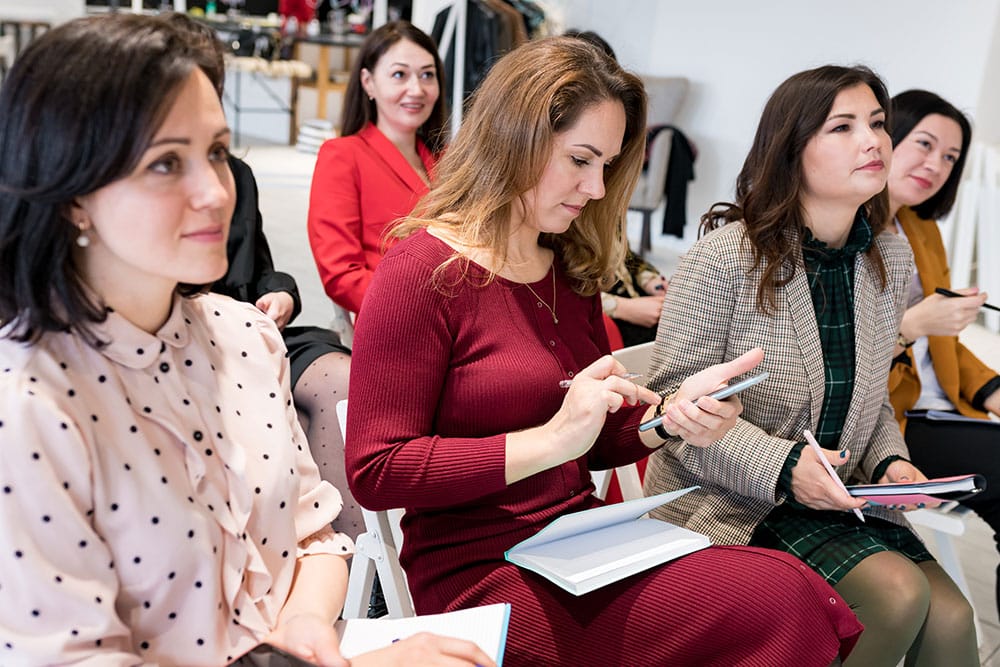
Building an Audience and Engaging with Fashion Communities
Building an audience is all about creating authentic connections with people who resonate with your work and want to support your journey. It takes time and consistent effort, so start by being active and transparent about your process. Share your behind-the-scenes work, post regularly, and engage with your followers through comments, stories, and posts. The key is to be present both online and offline; whether that means attending events, collaborating with other creatives, or participating in community-driven fashion discussions.
Fashion communities on platforms like Instagram, TikTok, Reddit, and even Discord are great places to find like-minded individuals who can offer support, inspiration, and constructive feedback. Don’t be afraid to comment on others’ work, join conversations, or pitch in on collaborative projects. Authenticity matters the most, so make sure your interactions feel genuine and personal. The more you connect and engage with people, the more they’ll feel invested in your growth, and in turn, they’ll stick around to see where your journey takes you.
Pitching Your Work to Fashion Brands and Retailers
It is a big step to start pitching your work, but it’s also how real opportunities start happening. Whether you’re looking to collaborate, sell your pieces, or get stocked in stores, you need to be clear, confident, and prepared. This means having a strong portfolio, a short and professional pitch, and understanding who you’re reaching out to. In this section, we’ll break down how to approach both fashion brands and retailers the right way.
Fashion brands
When reaching out to fashion brands, it’s important to approach each one with a tailored pitch rather than a generic message. Start by researching the brand’s style, ethos, and target audience to ensure that your work aligns with their aesthetic and values. In your email, keep it concise and to the point. Introduce yourself, express why you admire their brand, and provide links to your portfolio or recent work that demonstrate your skills and creativity. If you have a design or concept that fits with their brand’s vibe, make sure to highlight it.
Smaller or emerging brands can often be more flexible and open to collaborations, freelance work, or even design proposals, so don’t hesitate to reach out to them. These brands may be looking for fresh ideas and new talent but may not have the resources to work with bigger agencies. By offering your skills and showing how you can add value to their projects, you increase your chances of starting a meaningful partnership. Keep in mind that persistence and personalization are key when approaching brands; your email should make an impression, and show that you’ve taken the time to understand their work and goals.
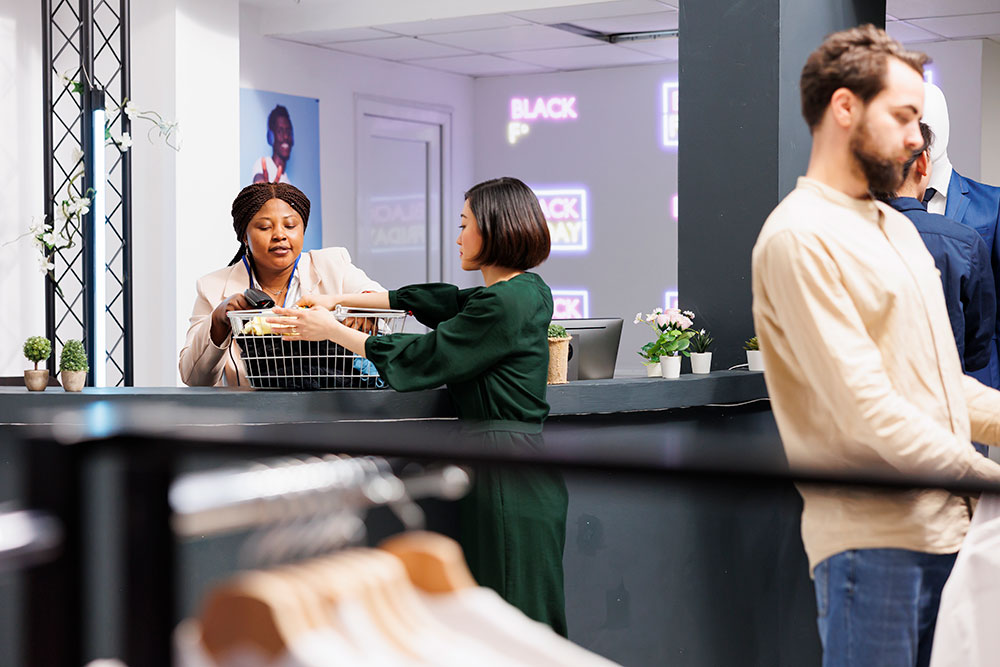
Retailers
When pitching to retailers, your focus should be on demonstrating that your pieces are marketable and can generate sales. Retailers will want to see your lookbook, wholesale pricing, and a clear understanding of your target audience. It’s important to convey that your brand has a strong identity and a loyal following or potential demand for your products. Be sure to highlight the uniqueness of your designs and why they would appeal to the retailer’s customer base.
Independent boutiques, especially in cities with vibrant fashion scenes, are often more open to supporting up-and-coming designers. In these cases, reaching out with a professional line sheet and high-quality sample images can go a long way in making a positive impression. Make sure your product presentation is polished and aligns with the store’s aesthetic. A well-prepared pitch showing both the creative and business sides of your brand will help set you apart and increase the chances of getting your designs into retail spaces.
The Role of Public Relations in Fashion
Public relations (PR) is an essential tool for anyone looking to grow their fashion brand and maintain visibility in a competitive industry. In fashion, PR is about managing your brand’s image and ensuring that your designs reach the right audience; editors, influencers, stylists, buyers, and the public. A strong PR strategy can lead to media coverage, features in top fashion magazines, and interviews that put you and your work in the spotlight. It’s all about building relationships, crafting your story, and generating excitement around your collections. Whether you’re working with a PR agency or handling things yourself, the ability to connect with journalists, bloggers, and industry leaders is crucial for getting noticed.
With the rise of social media, the role of PR has become even more important. Platforms like Instagram, TikTok, and YouTube are now integral to fashion marketing, and having a PR strategy that taps into these channels can significantly increase your reach. Influencers and online content creators play a major role in shaping trends, so leveraging these partnerships can boost your brand visibility exponentially. At the heart of it all is good storytelling; when you share your brand’s story authentically and creatively, it resonates with audiences and helps build a loyal following. In today’s fast-paced fashion industry, PR is no longer just a luxury; it’s a necessity for anyone serious about getting their designs out into the world.
Continue Reading
- How to Get Started in Fashion Design- A Beginner’s Guide / Part 1
- How to Get Started in Fashion Design- A Beginner’s Guide / Part 2
- How to Get Started in Fashion Design- A Beginner’s Guide / Part 3
- How to Get Started in Fashion Design- A Beginner’s Guide / Part 4
Written By: Muskaan Khojestagan
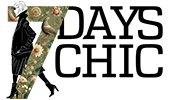
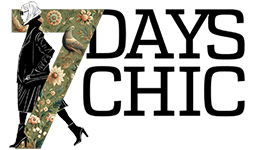
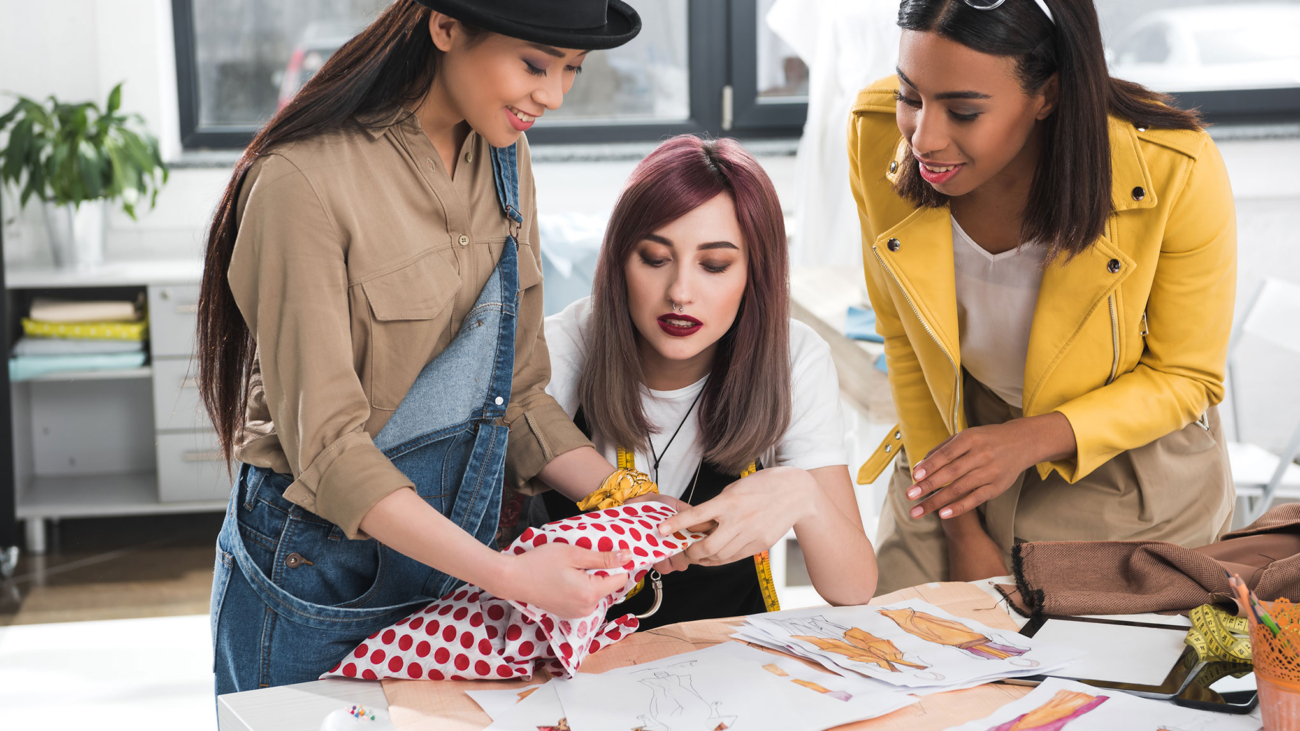
Add a Comment